Today’s Current Affairs: 10th February 2025 for UPSC IAS exams, State PSC exams, SSC CGL, State SSC, RRB, Railways, Banking Exam & IBPS, etc
Table of Contents
Cayman Islands : Earthquake
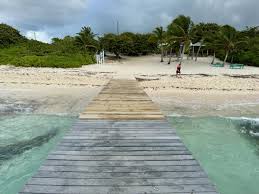
A magnitude-7.6 earthquake shook the Caribbean Sea southwest of the Cayman Islands recently, according to the U.S. Geological Survey.
- Cayman Islands is a British overseas territory in the Caribbean Sea located south of Cuba and northwest of Jamaica.
- The Cayman Islands are made up of three distinct islands – Grand Cayman, Cayman Brac and Little Cayman.
- The Cayman Ridge is an enormous underwater mountain range that is responsible for the formation of the islands. The islands are themselves the peaks of this ridgeline.
- The islands are famous for coral reefs, crystal-clear waters, and white sand beaches.
- Grand Cayman is the largest and the most populous island.
- In total, the islands cover a small area of just 264 sq. km.
- Its capital is George Town, on Grand Cayman.
- Official Language: English
- Currency: Cayman Islands Dollar (KYD)
- Ethnic groups: Afro-European 40%, African 20%, European 20%, other 20%
Klub-S Missile System:
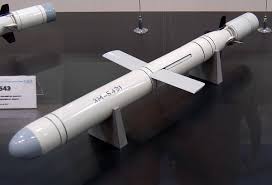
India recently reached an agreement with Russia to acquire the Klub-S missile system, aimed at enhancing the operational capabilities of the Indian Navy’s submarine fleet.
- Klub-S Missile System developed by Russian defense company NPO Novator, the Klub, also known as Kalibr, is a cruise missile inducted into Moscow’s defense forces in 1994.
- The Klub-S missiles have a warhead payload of 400 kilograms and are capable of targeting surface ships, submarines, and ground targets up to 300 kilometers away.
- This system includes a fire control system, a vertical launcher unit (VLU), and ammunition.
- It is known for its excellent performance in dangerous combat zones.
- It is designed for use in situations where the enemy is engaged in heavy firing and electronic warfare is at its peak.
- It can accelerate to supersonic speeds in the terminal phase, making it difficult for enemy defenses to intercept.
- It cruises at an altitude of 10-15 meters, reducing the reaction time for enemy defenses.
Bhil Tribe : In News
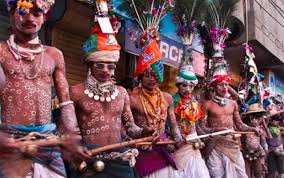
About 12 families of Bhils have alleged that the Vasantdada Sugar Institute (VSI) is trying to demolish their homes and displace them from the land where they have been residing for generations.
- Bhils are considered as one of the oldest tribes in India.
- They are the most widely distributed tribal groups in India.
- The name ‘Bhil’ is derived from the word villu or billu, which according to the Dravidian language is known as Bow.
- They could be identified as one of the Dravidian racial tribes of Western India and belong to the Australoid group of tribes.
- They are mainly divided into two main groups: the Central and Eastern or Rajput Bhils.
- The Central Bhils are found in the mountain regions in Madhya Pradesh, Maharashtra, Gujarat and Rajasthan.
- Bhils are also found in the north eastern parts of Tripura.
- Nearly all of the Bhil engage in agriculture, some using the slash-and-burn (jhum) method but most employing the ploughs.
- Language: They speak Bhili, which is an Indo Aryan language.
- Almost all Bhils practice ethnic religions that have been highly influenced by Hinduism.
- Most of them worship local deities like Khandoba, Kanhoba, Bahiroba, and Sitalmata.
- Some worship the Tiger God called ‘vaghdev’.
- The Baneshwar fair is the main festival celebrated among the Bhils.
- This fair is held during the period of Shivratri and is dedicated to Baneshwar Mahadev also known as Lord Shiva.
National Assessment and Accreditation Council : Halt To Physical Inspections Of Colleges
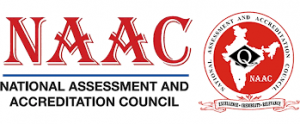
National Assessment and Accreditation Council (NAAC) recently announced an immediate halt to physical inspections of colleges.
- National Assessment and Accreditation Council (NAAC) was established in 1994 as an autonomous institution of the University Grants Commission (UGC).
- Its primary objective is to ensure and enhance the quality of higher education through a rigorous accreditation process.
- It conducts assessment and accreditation of Higher Educational Institutions (HEI) such as colleges, universities or other recognised institutions to derive an understanding of the ‘Quality Status’ of the institution.
- It evaluates institutions based on various parameters such as curricular aspects, teaching-learning processes, infrastructure, governance, and innovation.
- It functions through its General Council (GC) and Executive Committee (EC), comprising educational administrators, policymakers, and senior academicians from a cross-section of the Indian higher education system.
- The Chairperson of the UGC is the President of the GC of the NAAC; the Chairperson of the EC is an eminent academician nominated by the President of the GC (NAAC).
- At present, the assessment and accreditation by NAAC is done on a voluntary basis.
- Headquarters: Bengaluru
Dashavatar Theatre:
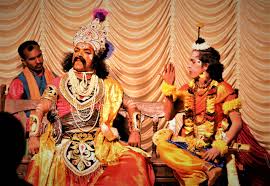
The Dashavatar theatre performances started in Maharashtra and North Goa region.
- Dashavatar Theatre is a popular form of theatre with a history of 800 years.
- This traditional folk theater is performed in Maharashtra and Northern Goa region.
- Theme: The stories presented in these shows are based on the 10 incarnations of Vishnu namely Matsya, Koorma, Varaha, Narsimha, Wamana, Parashurama, Ram, Krishna, Buddha and Kalki.
- Every year, the Dashavatar season begins after the paddy harvest, towards the end of the Navratri fast in October, and continues until May the following year.
- Musical instruments used: Paddle harmonium, Tabala and Zanj.
- The show is mostly musical sometimes dialogues are used.
- The origin of Marathi theatre can be traced to Dashavatara tradition.
Restructured National Bamboo Mission:

The Minister of State for Agriculture and Farmers Welfare informed the Lok Sabha about the restructured National Bamboo Mission.
- The restructured National Bamboo Mission was launched as a Centrally Sponsored Scheme in 2018-19.
- It provides assistance to both the Government & private sectors for the propagation and cultivation of bamboo in non-forest land, bamboo treatment, establishment of markets, incubation centers, value added product development & processing and development of tools & equipment.
- The funding pattern is 60:40 between Centre and State Government for all States except NE & Hilly States, where it is 90:10 and 100% in case of Union Territories/Bamboo Technology Support Groups (BTSGs) and National Level Agencies.
- Major objectives:
- To increase the availability of quality planting materials, area expansion of bamboo cultivation.
- To improve post-harvest management, primary treatment and seasoning, preservation technologies, market infrastructure, product development, promote skill development and re-align efforts to reduce dependency on import of bamboo and bamboo products.
- It is being implemented through the state nodal department which is nominated by the State/UT governments concerned.
Vishwamitri River:
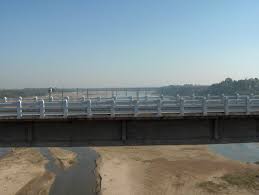
The Gujarat Ecological Education and Research (GEER) has begun analysing the data of the crocodile census conducted in a 25-km urban stretch of the Vishwamitri river passing through Vadodara city.
- Vishwamitri River originates on the hill of Pavagadh hills in Gujarat.
- It is linked with two other tributaries Dhadhar and Jambuva and finally culminates in the Gulf of Kambhat.
- It is primarily rain-fed, flows through a 25-km stretch of Vadodara, along the way before meeting the sea in Bharuch district.
- It is highly meandering sinuous river which has a unique ecosystem bearing a plethora of beautiful ravines right from its beginning till its end.
- The Vadodara stretch of the Vishwamitri is unique in that it is home to a large population of mugger or marsh crocodiles (Crocodylus palustris).
Cascade Range : New Research

New research reveals that long-dormant volcanoes in the Cascades region of the Pacific Northwest still have substantial magma reservoirs beneath them.
- Cascade Range is a prominent collection of mountains found in the Pacific Northwest area of the northwestern United States and southwestern Canada.
- The range was formed by the subduction of the Juan de Fuca Plate beneath the North American Plate, which continues to drive volcanic activity.
- It is known for its snow-capped peaks, massive glaciers, steep scree slopes, and lush forests.
- The range is home to 4375 named mountains, the highest and most visible of which is Mount Rainier 4,392 m.
- It includes both volcanic and non-volcanic mountains, including the rugged spires of the North Cascades, and the notable volcanoes known as the High Cascades.
- The Cascades are part of the Pacific Ring of Fire, the ring of volcanoes and associated mountains around the Pacific Ocean.
- All of the known historic eruptions in the contiguous United States have been from Cascade volcanoes.
M23 Rebels:
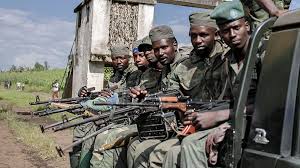
Rwanda-backed M23 rebels recently captured the regional capital Goma in an anarchic and mineral-rich part of the Democratic Republic of Congo.
- M23 Rebels or the March 23 Movement, is one of more than 100 armed groups fighting Congolese forces in the mineral-rich eastern Democratic Republic of Congo (DRC).
- M23’s leadership is dominated by ethnic Tutsis, a minority group in eastern DR Congo.
- It is present in North Kivu province in areas bordering Rwanda and Uganda and has more than 8,000 fighters, according to the UN.
- It is named after the date in 2009 of the signing of an accord between the National Congress for the Defence of the People (CNDP), a Tutsi-led rebel group, and the Congolese government to end a revolt led by the Tutsi people in eastern DRC.
- The agreement promised better political representation and integration of former rebels into the Congolese army.
- It is alleged that Rwanda is backing the M23 rebels.
- M23 fighting Congolese forces was created in 2012 after former CNDP troops rebelled against the Congolese government, accusing it of failing to implement the 2009 agreement by integrating Tutsi fighters into the army, protecting minorities, and distributing resources evenly.
- Its objective is to safeguard the interests of the Congolese Tutsi and other minorities, including protecting them against Hutu rebel groups who escaped to the DRC after taking part in the 1994 Rwandan genocide that targeted Tutsis.
Donkey Route:
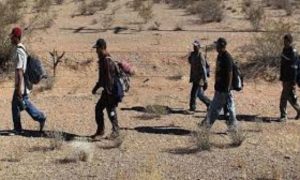
Indian deportees from the US, arriving in Amritsar, recently shared their harrowing experiences using the “donkey route” for illegal immigration.
- Donkey Route named after a Punjabi idiom referring to an arduous, unplanned journey, it involves crossing multiple international borders, often through treacherous terrain, under false promises of legal entry.
- It typically involves illegal border crossings via indirect routes with multiple stops in different countries.
- For instance, individuals might obtain a tourist visa for the European Union’s Schengen Area, allowing free movement across 26 countries, and then illegally enter the UK with the help of “consultants” or “agents.”
- These agents often charge hefty fees for services ranging from fake documentation to smuggling via shipping containers.
Daya River : 2025 Annual Bird Count
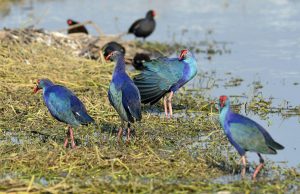
The 2025 annual bird count at Pong Dam Lake Wildlife Sanctuary recorded an unprecedented surge in waterfowl, with a total of 1,53,719 birds of 97 species, according to officials.
- Daya River is a 37 km small river in Odisha.
- It originates from the Kusabhadra River and flows through the Khurda and Puri districts before emptying into the Chilika Lake, the largest coastal lagoon in India.
- Tributaries: Malaguni River
- It supports wetland biodiversity, providing habitat for fish and migratory birds near Chilika Lake.
- The Daya River is historically important because of its connection to the Kalinga War (261 BCE), fought between Emperor Ashoka and the Kalinga kingdom.
- It is believed that after the battle, the river turned red with the blood of slain soldiers.
- This sight deeply moved Ashoka, leading him to embrace Buddhism and adopt a path of non-violence.
National Commission for Safai Karamcharis:

The Union Cabinet approved a three-year extension of tenure for the National Commission for Safai Karamcharis (NCSK).
- National Commission for Safai Karamcharis was first set up in 1994 under the National Commission for Safai Karamcharis Act, 1993.
- It was functioning as a statutory body till 2004, when the law lapsed.
- Since then, the commission is acting as a non-statutory body under the Social Justice Ministry with its tenure being extended from time to time.
- The NCSK gives recommendations to the Government regarding specific programmes for welfare of Safai Karamcharis, study and evaluate the existing welfare programmes for Safai Karamcharis, investigate cases of specific grievances etc.
- The NCSK has been assigned the work to monitor the implementation of the Prohibition of Employment as Manual Scavengers and their Rehabilitation Act, 2013.
- It is the only body keeping track of sewer deaths in the entire country.
Swavalambini Programme:
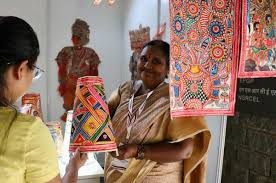
The union Ministry of Skill Development and Entrepreneurship launched the Swavalambini programme.
- Swavalambini Programme was launched by the Ministry of Skill Development and Entrepreneurship (MSDE) through Indian Institute of Entrepreneurship (IIE), in collaboration with NITI Aayog in Assam, Meghalaya and Mizoram.
- This initiative is aimed at empowering female students in select Higher Education Institutions (HEIs) in the northeast by equipping them with the essential entrepreneurial mind-set, resources, and mentorship they need to succeed in their entrepreneurial journey.
- Those who successfully build their ventures will be recognized and awarded, ensuring that their success stories inspire others.
- This initiative will define a clear process for how we nurture and scale women-led enterprises in India.
- The initiative aims to provide structured training through the Entrepreneurship Awareness Programme (EAP) which introduces 600 female students to entrepreneurship as a viable career option.
- For 300 selected students, the Women Entrepreneurship Development Programme (EDP) offers an intensive 40-hour training covering crucial business aspects such as training and skilling, access to finance, market linkages, compliance and legal support, business services, and networking opportunities.
- This will be followed by six months of mentorship and handholding support to help participants translate their ideas into sustainable prospects.
Shatavari Plant:
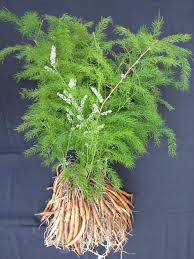
In a bid to raise awareness about the health benefits of medicinal plants, a species-specific campaign titled “Shatavari –For Better Health” was launched by Minister of State (Independent Charge), Ministry of Ayush.
- Asparagus racemosus (family Asparagaceae), also known by the name Shatavari, is one of the well-known drugs in Ayurveda.
- Shatavari means “acceptable to many”.
- It belongs to family Liliaceae and commonly known as Satawar or Satamuli.
- It is a woody climber growing to 1-2 m in height.
- The leaves are like pine needles, small and uniform and the flowers are white and have small spikes.
- Its habitat is common at low altitudes in shade and in tropical climates throughout Asia, Australia and Africa.
- In Ayurveda, this amazing herb is known as the “Queen of herbs”, because it promotes love and devotion.
- Charak Samhita, written by Charak, and Ashtang Hridyam, written by Vagbhata, list racemosus as part of the formulas to treat women’s health disorder.
- The dried roots of the plant are used as drug.
- The roots are said to be tonic and diuretic and galactagogue, the drug has ulcer healing effect probably via strengthening the mucosal resistance or cytoprotection.
- This herb is highly effective in problems related with female reproductive system.
RBI Clears Tata Communications’ Payment Arm Sale to Findi:
The Reserve Bank of India has approved Tata Communications’ sale of its entire stake in Tata Communications Payment Solutions Ltd to Australian fintech Findi’s subsidiary, Transaction Solutions International for ₹330 crore, with an additional ₹75 crore contingent on interchange rate adjustments.
India Secures Place on UN’s Honour Roll for Timely Budget Payment:
India has once again demonstrated its commitment to global cooperation by making a timely payment to the United Nations (UN) regular budget. On January 31, 2024, India contributed USD 32.895 million to the UN, securing its place on the prestigious Honour Roll, which acknowledges member states that pay their assessed contributions on time. This move underscores India’s long-standing financial responsibility within the UN framework.
Odisha Govt Launches ‘Bikashita Gaon’ Scheme for Village Development:
Odisha Chief Minister Mohan Charan Majhi launched the ‘Bikashita Gaon Bikashita Odisha’ (BGBO) scheme in Jankia, Khordha district. The initiative aims to enhance rural infrastructure development across Odisha. With a ₹5,000 crore budget for five years, the scheme will focus on improving road connectivity, civic amenities, educational facilities, and micro tourism development. The BJP-led government promises to ensure holistic village development within five years, keeping development and politics separate. This scheme follows the path of earlier initiatives like ‘Ama Gaon Ama Bikash’ (2018) and ‘Ama Odisha Naveen Odisha’ (2023) but with improved implementation and financial commitment.
Pakistan Joins China’s Chang’e-8 Lunar Mission:
Pakistan’s space program, the Space and Upper Atmosphere Research Commission (SUPARCO) has partnered with China National Space Administration (CNSA) for the upcoming Chang’e-8 lunar mission, scheduled for launch in 2028. This marks Pakistan’s first major involvement in a lunar exploration mission and signifies a significant step in its space ambitions. The collaboration will see an indigenous Pakistani rover deployed on the Moon’s south pole as part of China’s larger International Lunar Research Station (ILRS) project.
World’s First Kangaroo Embryos Created via IVF:
Researchers have successfully created kangaroo embryos through in vitro fertilization (IVF) for the first time. This achievement could revolutionize the conservation of endangered marsupial species, helping to protect them from extinction.The study, published in the journal Reproduction, Fertility and Development, was led by scientists at the University of Queensland, Australia. Their research highlights the potential of assisted reproductive technologies (ART) in safeguarding species like koalas, Tasmanian devils, northern hairy-nosed wombats, and Leadbeater’s possums.
Panama Withdraws from China’s Belt and Road Initiative:
Panama has officially announced its withdrawal from China’s Belt and Road Initiative (BRI), marking a significant geopolitical realignment. President José Raúl Mulino’s decision reflects growing tensions between global powers, particularly the United States and China, over the strategic Panama Canal. The move signals a shift in Panama’s foreign policy, focusing on strengthening ties with the U.S. while re-evaluating Chinese investments in the country.
Shrachi Rarh Bengal Tigers Clinch Title of Hockey India League:
Men’s Hockey India League (HIL) 2024-25 season culminated in a thrilling final, where Shrachi Rarh Bengal Tigers triumphed over Hyderabad Toofans with a 4-3 victory. The intense showdown at Birsa Munda International Hockey Stadium in Rourkela.
SEBI Penalizes DB Realty and Associates for Financial Misstatements:
The Securities and Exchange Board of India (SEBI) has imposed a total fine of ₹25 lakh on DB Realty Ltd (now known as Valor Estate Ltd) and seven associated individuals for violations related to financial misstatements and non-disclosures. The penalties were levied due to the company’s failure to adhere to accounting standards and adequately disclose a corporate guarantee provided to the Bank of India on behalf of Pune Buildtech Pvt Ltd (PBPL).
SBI’s Q3 FY25:
State Bank of India (SBI) reported an 84% rise in net profit for Q3 FY25, surpassing market expectations. The bank’s net interest income (NII) increased by 4%, while employee expenses declined significantly. SBI demonstrated strong loan growth, improved asset quality, and higher deposit mobilization. Despite a dip in CASA ratio, the overall financial health remains robust.Net profit surged 84% YoY to ₹16,891 crore (Q3FY24: ₹9,164 crore).Net Interest Income (NII) grew 4% YoY to ₹41,446 crore (Q3FY24: ₹39,816 crore).Employee expenses fell 17% YoY to ₹16,074 crore.Operating profit declined 20% .Provisions stood at ₹911 crore, higher than last year but lower than the previous quarter.
BIMSTEC Youth Summit 2025 in Gandhinagar:
The BIMSTEC Youth Summit 2025 will be held in Gandhinagar, Gujarat, from 7th to 11th February 2025, bringing together young leaders from Bangladesh, Bhutan, India, Myanmar, Nepal, Sri Lanka, and Thailand to foster regional collaboration.The summit will be inaugurated on 8th February 2025 by Union Minister Dr. Mansukh Mandaviya, with the aim of strengthening ties between the youth of Bangladesh, Bhutan, India, Myanmar, Nepal, Sri Lanka, and Thailand. Organized by the Department of Youth Affairs, Ministry of Youth Affairs & Sports, Government of India, the summit will focus on youth-led initiatives, leadership discussions, and sustainable development goals (SDGs).
Indian Navy’s First Training Squadron:
The First Training Squadron (1TS) of the Indian Navy, comprising INS Sujata, INS Shardul, and ICGS Veera, arrived at Changi Naval Base, Singapore, on 6th February 2025. This visit is part of the Long-Range Training Deployment to Southeast Asia, strengthening maritime cooperation and fostering mutual understanding. The squadron had previously visited Singapore in October 2023.
International Buddhist Confederation Unveils Triservices Trek:
The International Buddhist Confederation (IBC) is set to launch the Lord Buddha Trination Triservices Expedition, a historic initiative uniting the armed forces of India, Nepal, and Sri Lanka. This unique motorcycle expedition will commence from Lumbini, Nepal (the birthplace of Lord Buddha) and conclude in Galle, Sri Lanka, covering key Buddhist heritage sites along the route.The expedition aims to celebrate the shared cultural and spiritual heritage of the three nations while promoting peace, harmony, tourism, and environmental awareness.




